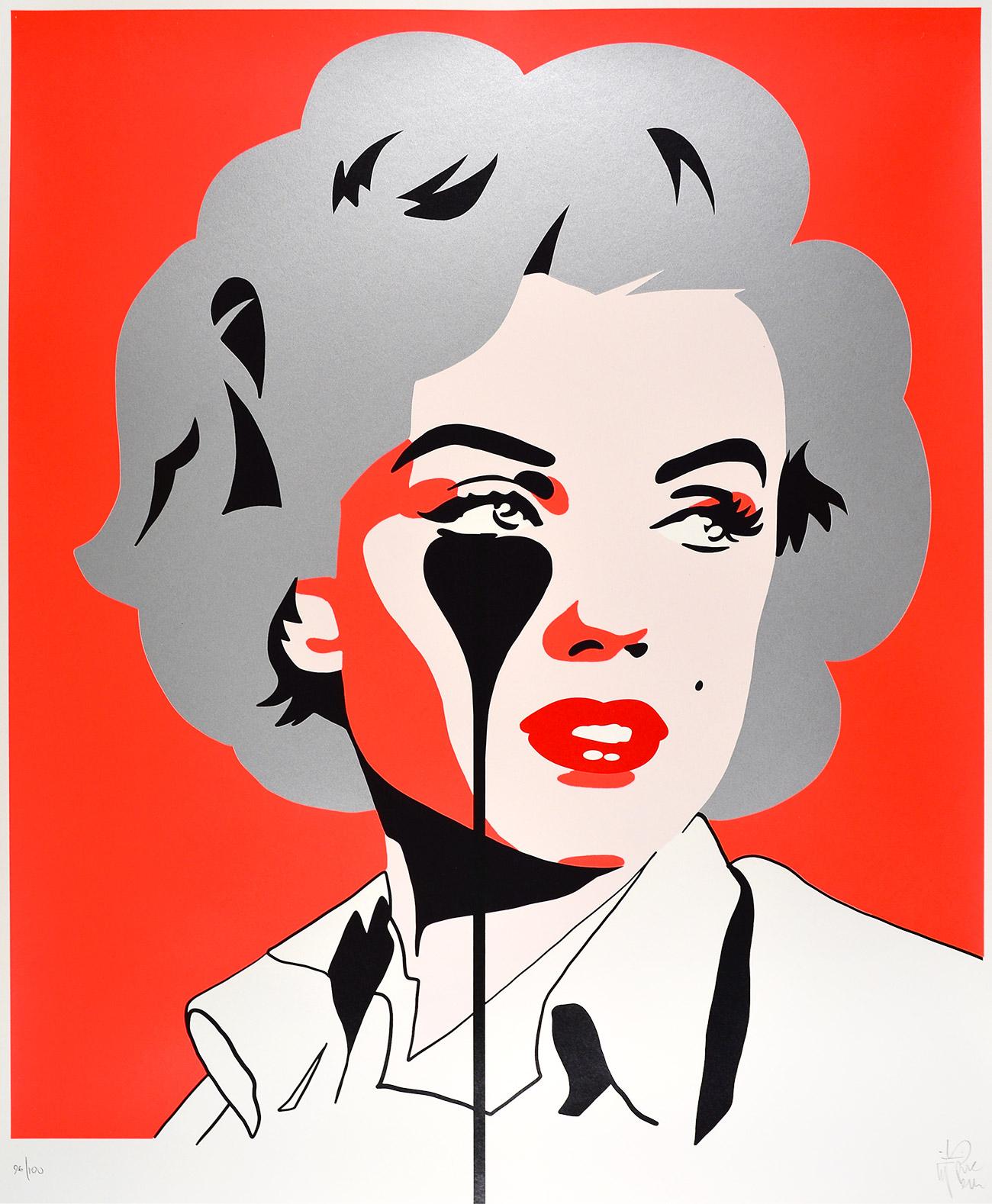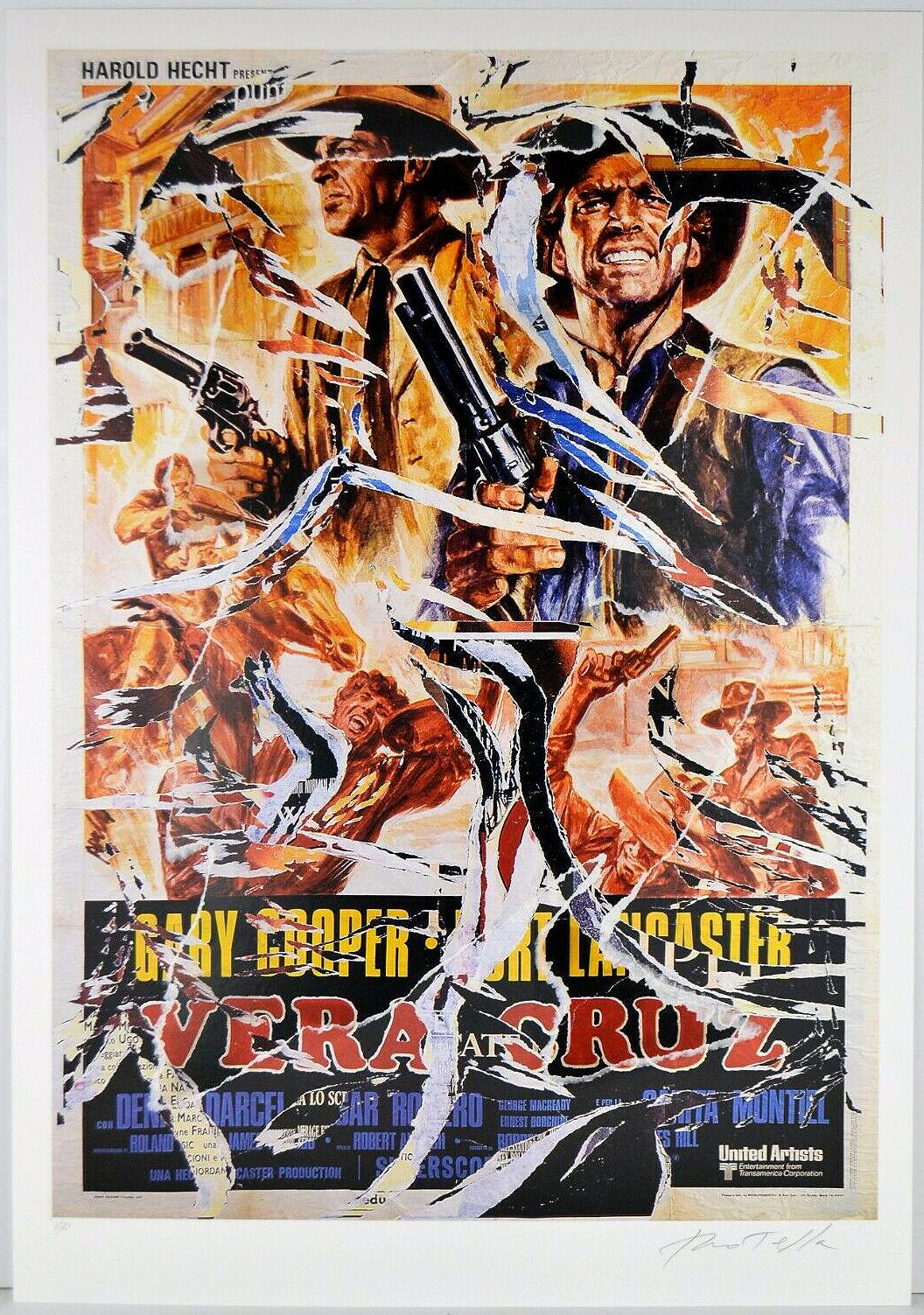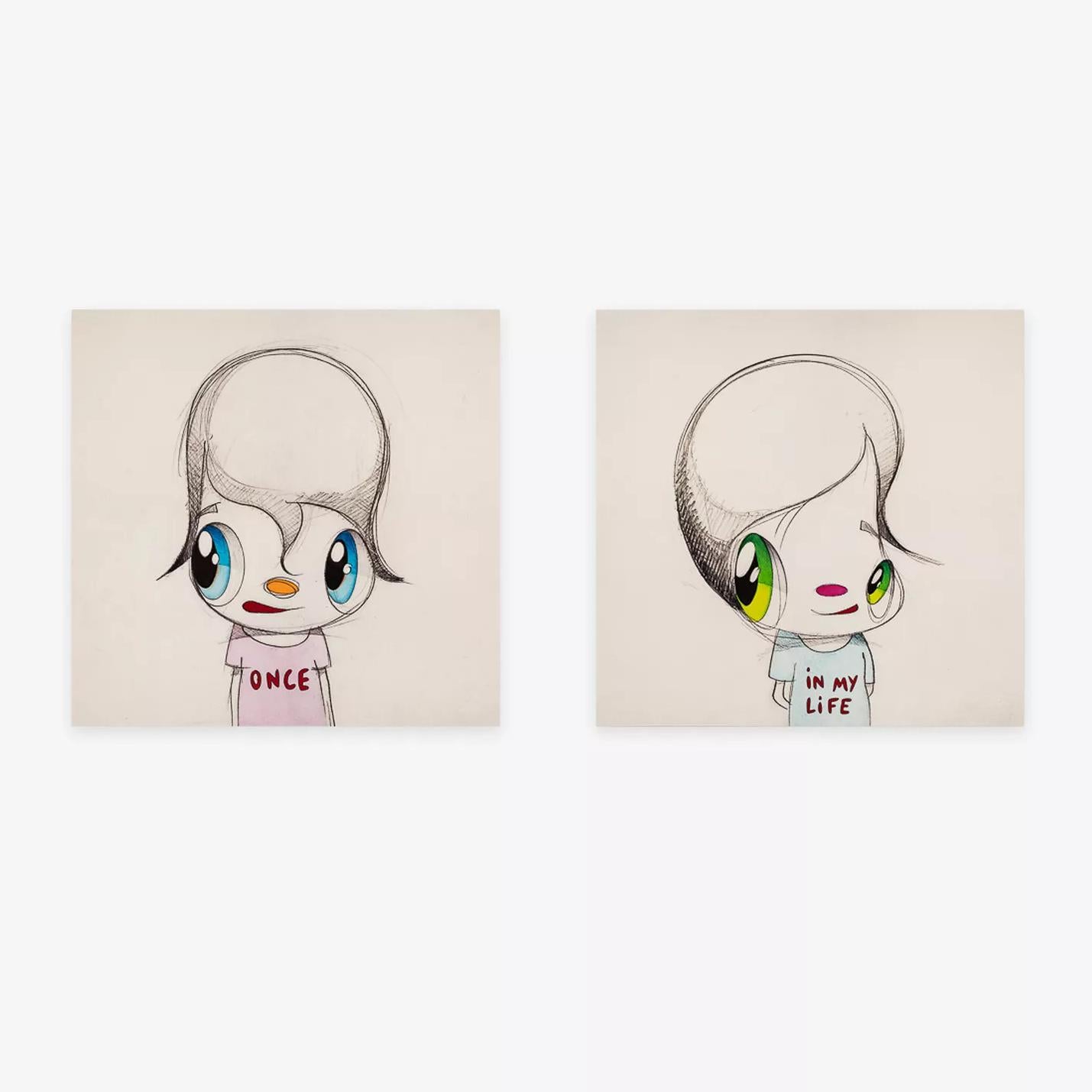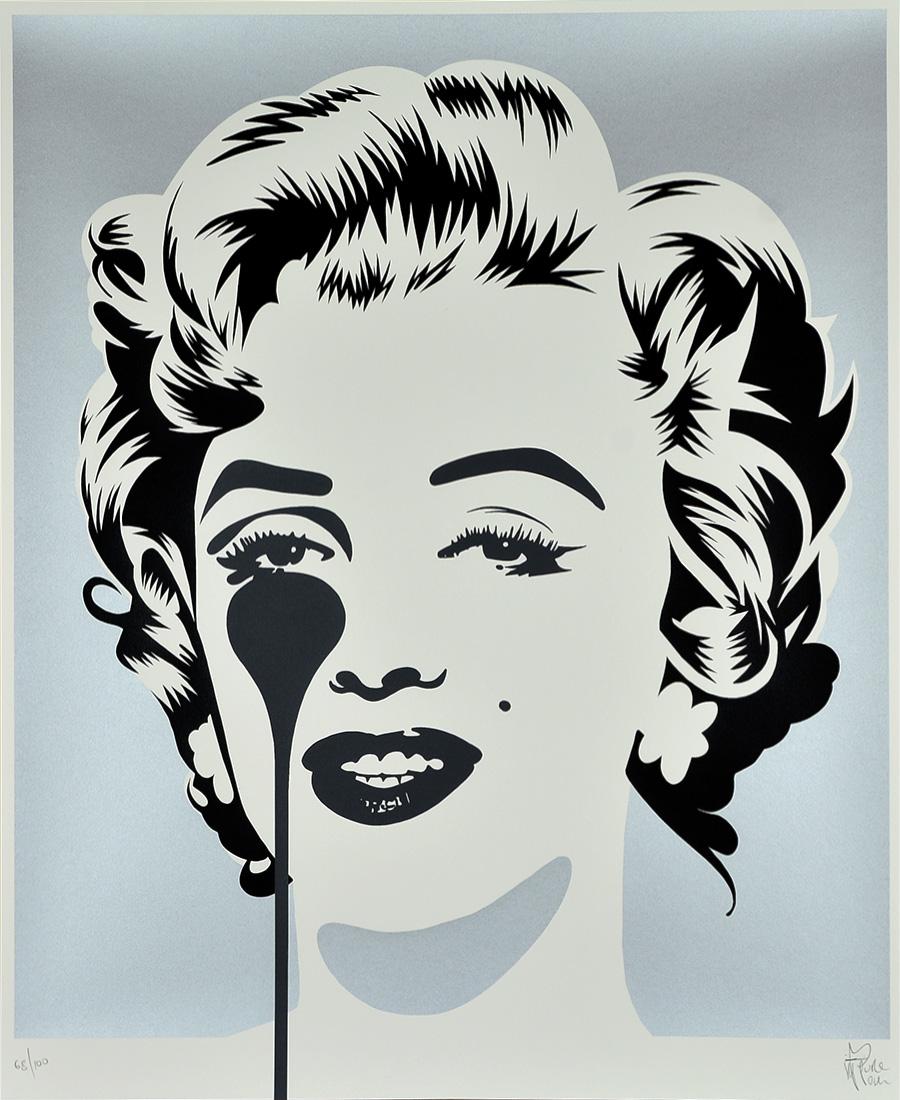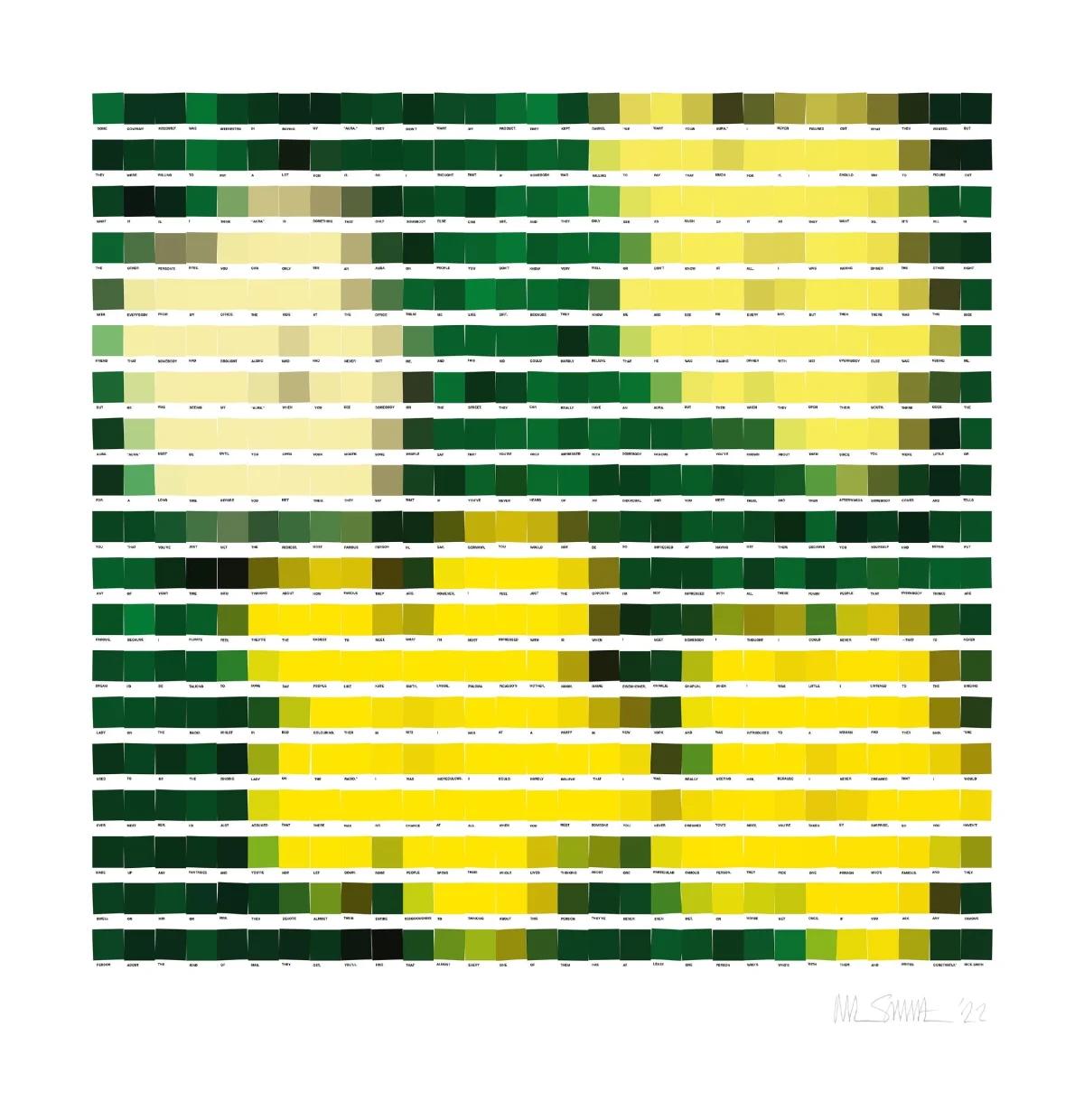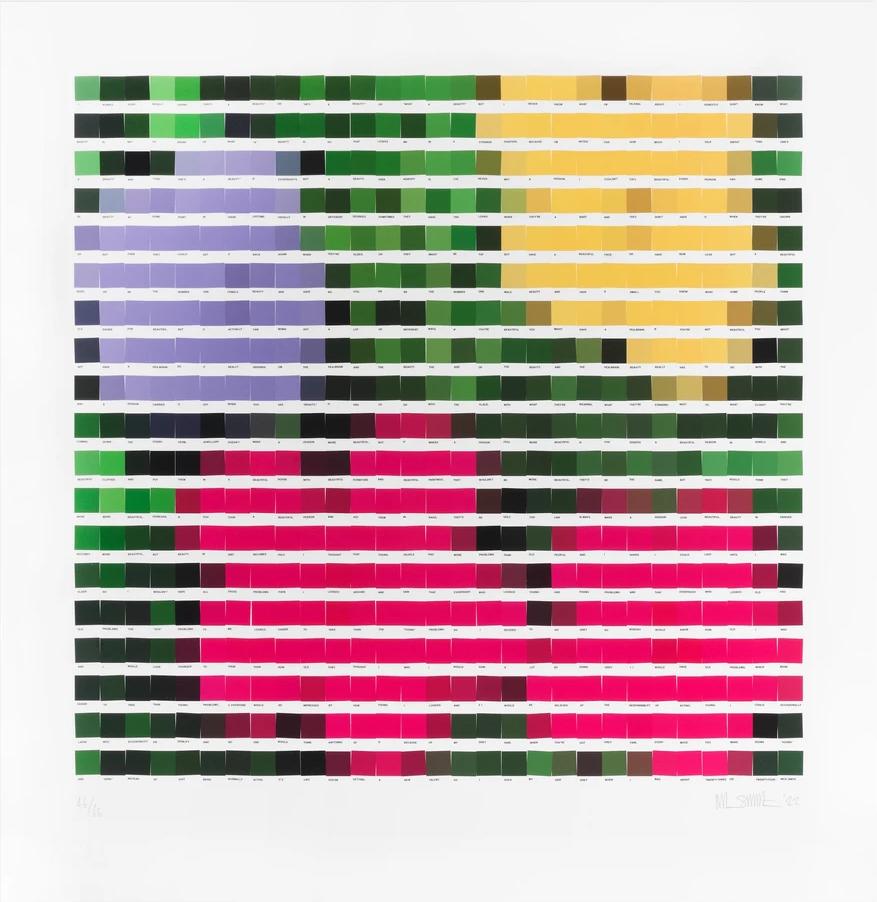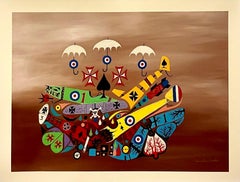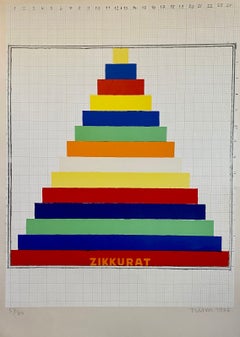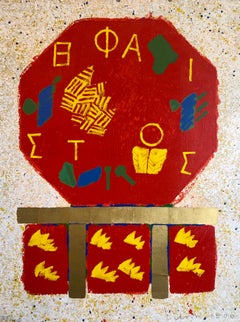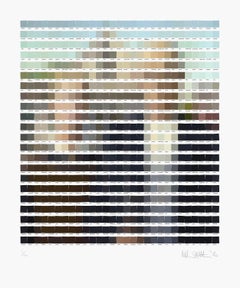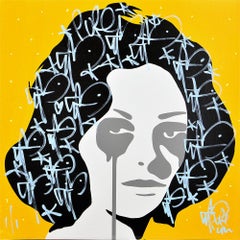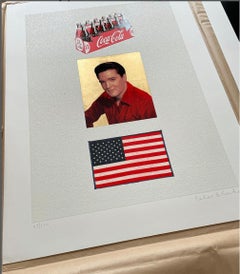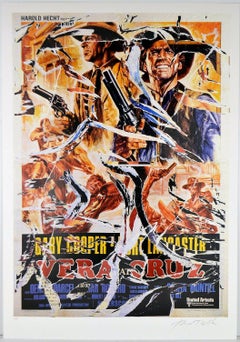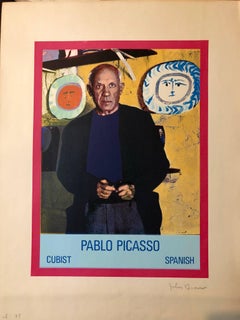
Vintage 1960s Pablo Picasso Photo Silkscreen Serigraph Pop Art
View Similar Items
Want more images or videos?
Request additional images or videos from the seller
1 of 11
John BrowerVintage 1960s Pablo Picasso Photo Silkscreen Serigraph Pop Art1968
1968
$750List Price
About the Item
- Creator:John Brower (American)
- Creation Year:1968
- Dimensions:Height: 24 in (60.96 cm)Width: 18 in (45.72 cm)
- Medium:
- Movement & Style:
- Period:
- Condition:
- Gallery Location:Surfside, FL
- Reference Number:1stDibs: LU3822506223
About the Seller
4.9
Platinum Seller
Premium sellers with a 4.7+ rating and 24-hour response times
Established in 1995
1stDibs seller since 2014
1,777 sales on 1stDibs
Typical response time: 1 hour
Authenticity Guarantee
In the unlikely event there’s an issue with an item’s authenticity, contact us within 1 year for a full refund. DetailsMoney-Back Guarantee
If your item is not as described, is damaged in transit, or does not arrive, contact us within 7 days for a full refund. Details24-Hour Cancellation
You have a 24-hour grace period in which to reconsider your purchase, with no questions asked.Vetted Professional Sellers
Our world-class sellers must adhere to strict standards for service and quality, maintaining the integrity of our listings.Price-Match Guarantee
If you find that a seller listed the same item for a lower price elsewhere, we’ll match it.Trusted Global Delivery
Our best-in-class carrier network provides specialized shipping options worldwide, including custom delivery.More From This Seller
View AllJonathan Winters Screenprint Canvas Painting Airplane Hollywood Hang Ups Pop Art
By Jonathan Winters
Located in Surfside, FL
Overall 21 X 27 image is 17.25 X 23.5
This is a mixed media print on canvas by beloved comedian and artist Jonathan Winters.
This one depicts old biplane airplanes and parachutes
...
Category
1980s Pop Art Figurative Paintings
Materials
Canvas, Screen
Vibrant 1975 Joe Tilson British Pop Art Screenprint, Woodblock, Colorful Print
By Joe Tilson
Located in Surfside, FL
Silkscreen screenprint. Hand signed and numbered. A pyramid or ziggurat in vibrant colors of blue, red, yellow, orange and green on heavy paper
Joseph Charles Tilson RA (born 24 Au...
Category
1970s Pop Art Abstract Prints
Materials
Screen
MOONWALK 1970 Color Silkscreen Screenprint Acrylic Plexiglass Mod Space Art
By Lowell Nesbitt
Located in Surfside, FL
Space Race Silkscreen on Acrylic hand signed and dated 1970, MOON WALK, color screenprint on Plexiglas depicting the moon landing, from the numbered edition of 150, size 30 x 30”
L...
Category
1970s Pop Art Abstract Prints
Materials
Plexiglass, Screen
Joe Tilson British Pop Art Screenprint, Woodblock, Gold Leaf Print
By Joe Tilson
Located in Surfside, FL
Silkscreen screenprint with woodblock and gold leaf Hand signed and numbered.
Joseph Charles Tilson RA (born 24 August 1928 in London) is an English pop art painter, sculptor and pr...
Category
1990s Pop Art Abstract Prints
Materials
Screen
Vibrant Joe Tilson British Pop Art Screenprint, Woodblock, Colorful Print
By Joe Tilson
Located in Surfside, FL
Silkscreen screenprint with woodblock and silver leaf Hand signed and numbered. In vibrant color of blue and silver on heavy paper with an almost painting type texture to it.
Josep...
Category
1990s Pop Art Abstract Prints
Materials
Screen
1960's Pop Art Silkscreen Print 108$ Bill Inflation Hand Signed and Numbered
By Oyvind Fahlstrom
Located in Surfside, FL
Öyvind Axel Christian Fahlström (1928–1976) was a Swedish Multimedia artist.
Fahlström was born in Sao Paulo, Brazil, In July 1939 he was sent to Stockholm to visit some distant relatives and after World War II he started to study and later on to work as a writer, critic and journalist. From 1960 until 1976 he was married to the Swedish Pop Art painter Barbro Östlihn.
In 1953 Fahlström had his first solo exhibition, showing the drawing Opera, a room-sized felt-pen drawing. Also in 1953 he wrote Hätila ragulpr på fåtskliaben, a manifesto for concrete poetry, published in Swedish the following year and in English translation (by Mary Ellen Solt, in her anthology "Concrete Poetry. A world view") in 1968.
In 1956 Fahlström moved to Paris and lived there for three years before he moved to Front Street studio, New York City. In New York he worked with different artists and explored his role as an artist further. In 1962 he participated in the New Realists exhibition at the Sidney Janis Gallery, in New York City. His work was included in the 1964 Venice Biennale and he had a solo exhibition at Cordier & Ekstrom Inc., New York. In 1965 he joined the Sidney Janis Gallery.
In 1966 his work Performance of Kisses Sweeter Than Wine was included in 9 Evenings: Theatre and Engineering, organized by Experiments in Art and Technology at the 26th Street Armory, New York. The same year his painting in oil on photo...
Category
1970s Pop Art Figurative Prints
Materials
Lithograph, Screen
You May Also Like
NICK SMITH - AMERICAN GOTHIC. Limited edition hand signed Pop Art Design Modern
By Nick Smith
Located in Madrid, Madrid
NICK SMITH - AMERICAN GOTHIC
Date of creation: 2020
Medium: Giclée and screen printed varnish on paper
Edition: 150
Size: 84 x 70 cm
Condition: Brand new, in mint conditions and nev...
Category
2010s Pop Art Figurative Prints
Materials
Varnish, Archival Paper, Giclée, Screen
PURE EVIL RICHARD BURTON'S NIGHTMARE Unique Street Graffiti Pop Art Liz Taylor
By Pure Evil
Located in Madrid, Madrid
PURE EVIL - RICHARD BURTON'S NIGHTMARE
Date of creation: 2020
Medium: Hand finished screen print on paper
Edition: 1
Size: 26 x 26 cm
Condition: In mint conditions, brand new and nev...
Category
2010s Pop Art Figurative Prints
Materials
Ink, Spray Paint, Screen, Stencil
American Trilogy, Cream and Gold, Diamond Dust
By Peter Blake
Located in Norwich, GB
Limited edition of 150. Three American icons: the stars and stripes, Elvis Presley and Coca Cola are combined to create American Trilogy, a classic pop art image by Sir Peter Blake.A...
Category
21st Century and Contemporary Pop Art Figurative Prints
Materials
Archival Pigment, Screen
Mimmo Rotella - Decollage Hollywood Gary Cooper Burt Lancaster Italian Pop Art
By Mimmo Rotella
Located in Madrid, Madrid
Mimmo Rotella - VERA CRUZ
Date of creation: circa 2005
Medium: Multiple decollage screen print on heavyweight paper
Edition: 125 + L + P.A.
Size: 100 x 70 cm
Condition: In very good ...
Category
Early 2000s Pop Art Figurative Prints
Materials
Paper, Screen
PURE EVIL -ARTHUR MILLER'S MARILYN MONROE Street Urban Pop Graffiti Hollywood UK
By Pure Evil
Located in Madrid, Madrid
PURE EVIL - ARTHUR MILLER'S NIGHTMARE (FLUORO)
Date of creation: 2022
Medium: Screen print on Fedrigoni paper
Edition: 100
Size: 85 x 70 cm
Condition: In mint conditions, brand new a...
Category
2010s Pop Art Figurative Prints
Materials
Paper, Screen
JAVIER CALLEJA - ONCE IN MY LIFE (DIPTYCH) Limited edition Modern Anime Design
By Javier Calleja
Located in Madrid, Madrid
JAVIER CALLEJA - ONCE IN MY LIFE (DIPTYCH)
Date of creation: 2023
Medium: Two hybrid UV flatbed pigment print with silkscreen, varnish and embossments on Somerset paper
Edition: Once...
Category
2010s Pop Art Figurative Prints
Materials
Varnish, Inkjet, Screen



